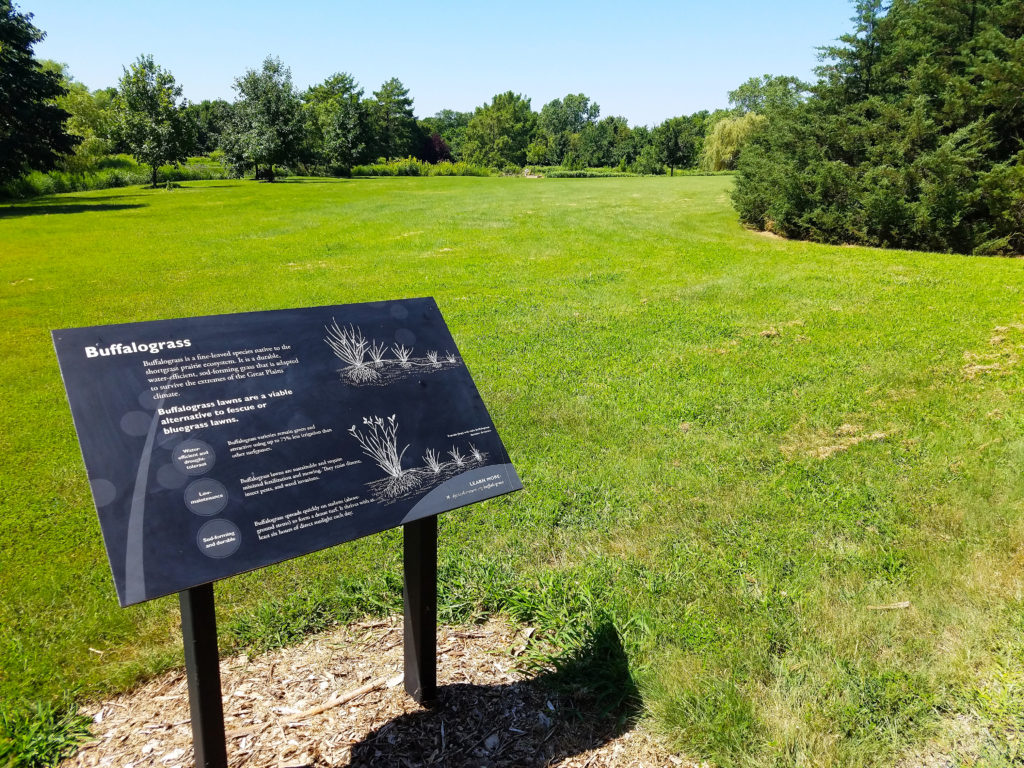
Buffalograss is a fine-leaved native grass species that is an important part of the short grass prairie ecosystem. It is a durable, water-efficient, sod-forming grass that is adapted to survive the weather extremes of the Great Plains climate — heat, cold and drought.
In the past, buffalograss supported the vast herds of bison that roamed the Great Plains. Later, early homesteaders built their first homes, sod houses, from buffalograss. Today, buffalograss lawns have become a popular alternative to fescue or bluegrass lawns for the qualities that allow it to survive on the prairie.
Water efficiency and drought tolerance
Buffalograss varieties remain green and attractive using 30 – 75% less irrigation than Kentucky bluegrass.
Low-maintenance
Buffalograss lawns are sustainable landscapes. They require minimal fertilization and mowing, and they resist disease, insect pests, and weed invasions.
Sod-forming durability
Buffalograss spreads quickly on stolons (above- ground stems) to form a dense turf. It flourishes with at least six hours of direct sunlight each day.
Why is it called buffalograss?
It was the grass American bison preferred to eat, hence the name.
Buffalograss has become very popular as a low-maintenance lawn grass. This hardy grass greens up two-to-three weeks later than Kentucky Bluegrass in spring, and stays green all summer with little or no care. It goes dormant at the first killing frost and turns a beautiful buff color until it breaks dormancy again in the spring. New interest in this grass for home lawns has led to new varieties that are darker green, form a dense, short-growing turf, and are more resistant to weed invasion than previously used varieties. Those who choose to plant newer buffalograss varieties find that their lawn can remain green and attractive on 50 to 75% less irrigation than Kentucky bluegrass, and that buffalograss requires less frequent mowing, will thrive when fertilized only once or twice yearly, and has good resistance to weed invasion.
Small shoots have hairs on both sides and edges of leaves. The leaf sheath is hairless. Buffalograss has both male and female plants with the male plant having a flag-type pollen head above the stem. The female plant produces the seed toward the base of the plant.
Unlike many native grasses, buffalograss grows as much as 5 inches within 50 days after planting! In nature, buffalograss germinates very slowly, but after a non-toxic priming with potassium nitrate to break down dormancy, germination can occur within 14 days.
With proper weed control, buffalograss spreads fast on runners or stolons (like strawberry plants), but is not a pest. Each node on these stolons sends down a root, which creates another plant. This holds the runner in place.
Buffalograss requires six-to-eight hours of sunlight and does especially well on hot, droughty sites where bluegrass dies out. It requires sunlight and well-drained soil and often is used for erosion control.
